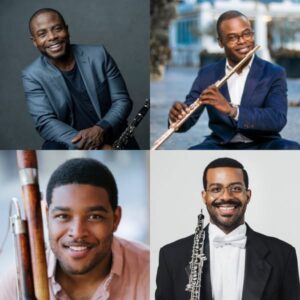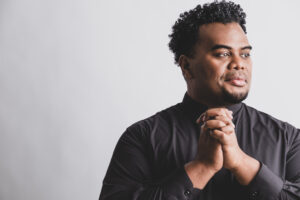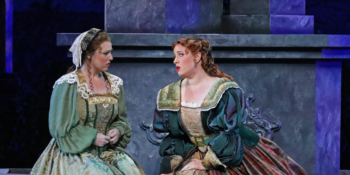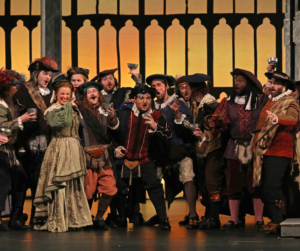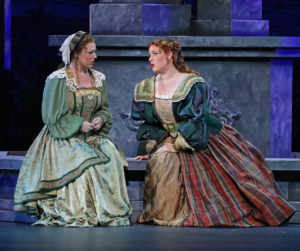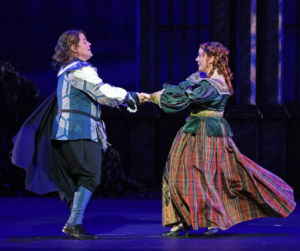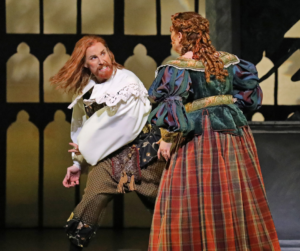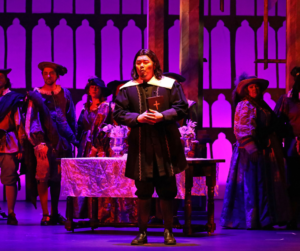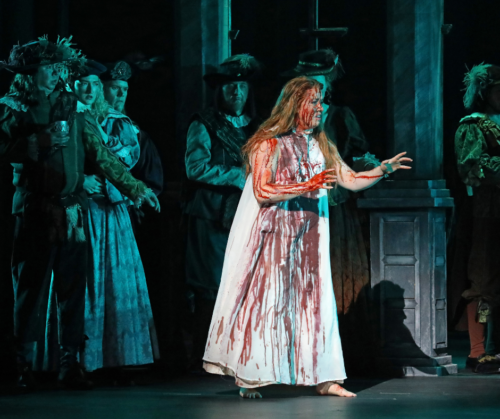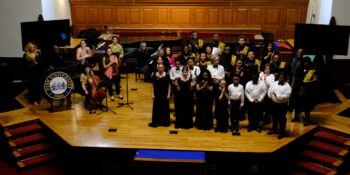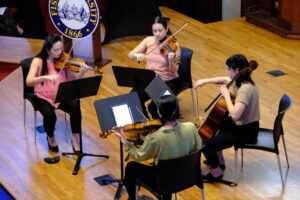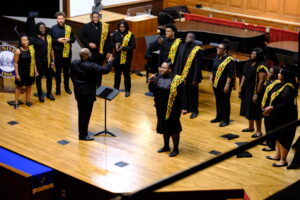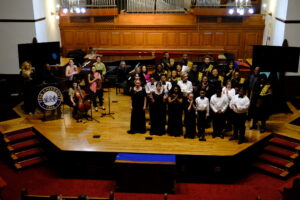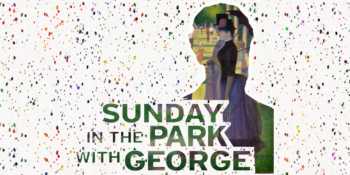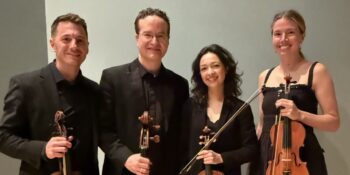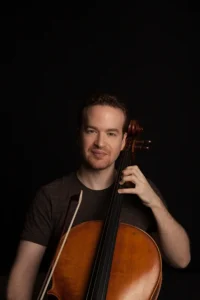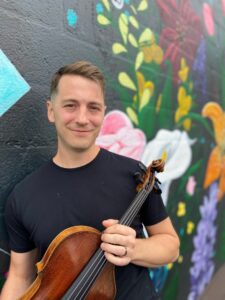Broadway at TPAC
Mamma Mia!
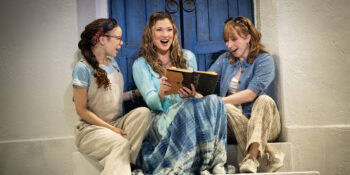
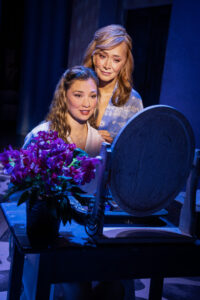
It was quite the packed night at TPAC. On March 18, 2025 at 7:15 pm, the air was both alive and electrified. In my time as a music journalist, I don’t believe I’d ever seen TPAC so busy. I took my seat—K3, all the way to the right of the building—and I was surrounded by a sea of voices, as eager for what was to come as I. Strangers, mostly women of all ages, made easy conversation with one another; from what I could eavesdrop, about weekend activities, church, and, of course, Mamma Mia.
The lights dimmed, and the performance began softly, with Sophie (Amy Weaver) confessing to her best friends that she’d invited her three potential fathers to her upcoming wedding, without her mother’s knowledge. Her lyric soprano voice carried beautifully over strings and woodwinds, especially through the seamless set transitions; they bled into each other so well it was as if I were watching the movie. Sophie’s vocals were beautifully contrasted with her mother Donna Sheridan (Christine Sherrill’s) much deeper, richer alto voice as she sung of her former flings all returning for her daughter’s wedding.
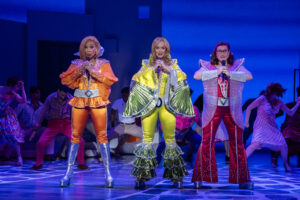
As someone who admittedly hadn’t seen a Mamma Mia production in years before this night, I had very little prior knowledge on what I was walking into. But from the beginning, with this performance, it was made clear this would be a non-issue. All characters and their relationships to one another were introduced with clarity, and the storyline remained easy to follow. Among classic ABBA tunes like “Dancing Queen,” “Honey Honey,” and “Voulez-Vous,” the cast blew their way through the musical in an astonishingly rich and deeply humorous fashion. Tanya (Jalynn Steele) was my personal favorite. Her rich alto voice and acting truly stole the show; she’s both the fierce independent woman I can relate to, yet also running away from every man who chases her.
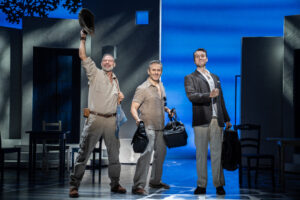
If I had to praise one aspect of the show above all others, it would absolutely be costume design. All the outfits, from Sophie’s wedding dress, to Tanya’s glamorous sunglasses and scarves, to the fathers’ suits, camping gear and much more, were all spot-on. They sparked a 70s atmosphere to the stage, while keeping it contemporary at the same time. It’s one of those rare, beautiful timeless aspects to an art that are difficult to come by, but was done so perfectly here at this packed TPAC night.
Mamma Mia shone its timelessness, in the audience, voices, setting and costumes. I highly recommend the show, and while their time at TPAC is over, you can find out more about their tour here.
From the Nashville Repertory Theatre
Sunday in the Park with George
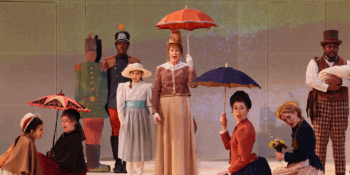
I had been looking forward to this show since they’d first announced it. Sondheim! Sunday in the Park with George won the 1985 Pulitzer Prize for Drama (one of only 10 musicals to do so). I won’t go into deep analysis of the musical itself; there are many excellent resources on this work, both online and especially in James Lapine’s book Putting It Together: How Stephen Sondheim and I created Sunday in the Park with George. You can also watch the PBS American Playhouse version with most of the original cast on YouTube and elsewhere. Except for a brief summary of the musical, I will focus my review on the Nashville Repertory Theatre’s production. 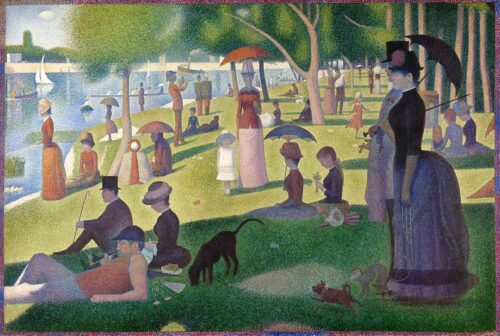
In the past few years I’ve seen the Nashville Repertory Theatre do many excellent musicals with the typical clear-cut separation of dialogue and individual songs. Sunday in the Park with George, however, has lengthy stream-of-consciousness songs with interspersed dialogue, complex rhythms, challenging vocal demands, and talented musicians. You can’t accomplish this show casually or half-heartedly. The Nashville Rep did it with complete dedication. It was an impressive and successful accomplishment.
The musical is about two-and-a-half hours with two acts. The first act is about Georges Seurat and his meticulous creation of the famous and familiar pointillist painting A Sunday Afternoon on the Island of La Grande Jette. This took the real artist two years to make and around 60 different studies and sketches. We see how his obsession with his creation damages his relationships while also enjoying large comic scenes with the ensemble who together make up the figures in the final painting. The second act is about his fictional descendent and his own artistic career in 1984, struggling with some of the same issues as his ancestor. The play muses on the nature of the creation of art, the art world, authenticity, and community with others.
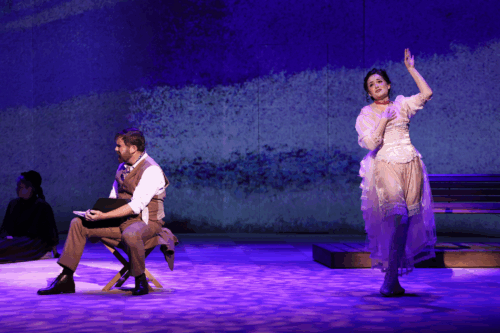
I saw their April 11th show with a highly engaged crowd. While the Nashville Rep always has great musicians (thank you Music City), this group was strikingly good. Taking on the demanding music, the orchestra was fantastic, playing nonstop and fluidly under Stephen Kummer’s direction. With the full orchestration of the original score we were able to enjoy the musical in its complete glory. All the textures and uniquely chosen timbres were perfectly balanced with the voices of the singers in Polk Hall, showcasing the skill of the Rep and the aptness of the space for musicals.
The singing was excellent, the cast completed their roles with vocal skill and tight ensemble collaboration. The accomplished Broadway performer Christine Dwyer was stunning as Dot, George’s mistress and eventually mother of his child, immediately winning us over in the opening number “Sunday in the Park with George.” Not only her voice, but her acting and knack for comedy were excellent. David Shannon, experienced in London’s West End, showed the complexities of George through his talented performance.
This opening number also holds a challenge: for most of the song Dot is complaining about modeling on a hot day until a new musical theme is introduced and she sings her intimate thoughts about George and herself, before returning to her complaining. The original show doesn’t only express through the music, but has her literally step out of her dress for the moment of intimacy. The “iron dress” remains standing in the rigid pose and she returns to it when she resumes her complaints about posing. It’s an unexpected and deeply funny expression of costume design meeting the music. The 2017 Broadway revival production dropped this element, having Dot instead step away from an upright parasol and remove her jacket. While this communicates much the same thing and is easy to accomplish, the Nashville Rep didn’t go the easy road. Costume Designer Melissa K. Durmon took on the challenge and provided the iron dress to audience delight. Since the various members of the ensemble comprise different figures in the final painting, most of the costumes were determined in 1886, but Durmon did a marvelous job of providing the details and fitting them perfectly to the cast.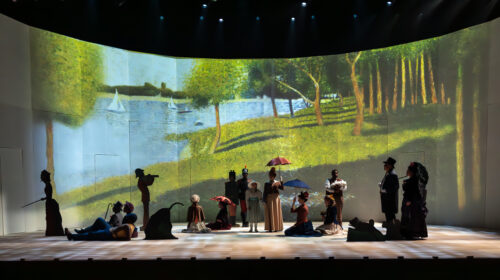
As a musical about a man’s obsession with the creation of a painting, it’s rather important to be able to see the painting. The visuals of this show were excellent: a neutral-colored backdrop became a projector screen to showcase Seurat’s painting. For the first act the background was a projected image of one of Seurat’s many studies for the painting. It’s colorful and beautiful and of the actual location. Gary C. Hoff’s design was perfect! Characters often find themselves exactly where they will be in the final painting. The hugeness of the backdrop made it so that everyone in the audience had the perfect sightline to see their placement.
There are a few moments in the first act when we see George in his studio, and large picture frames with transparent screens are lowered. Images of the paintings he’s working on are projected onto these, literally allowing us to see George through his art. A great visual gag at the beginning of the play calls for the removal of a tree George dislikes while sketching, and the prop is lifted from the stage up out of sight.
The second act, where George’s great-great-grandson’s own art is a “Chromolume” was somewhat less impressive than the original production’s machine and light-show, but I think that has to do with the more dated nature of laser art. Born in the 90’s, I grew up with laser tag and the iTunes visualizer, so lasers feel commercial and corporate rather than imaginative or artistic. This production projected colorized words across the set, which was fine enough. 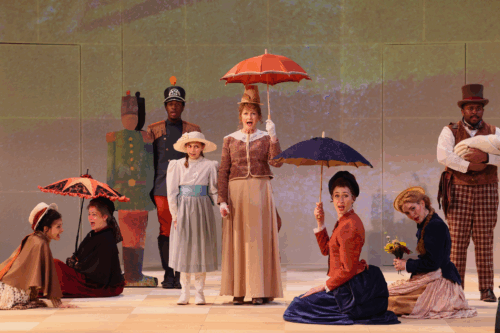
Such a thought-through musical as Sunday in the Park with George, with its music showcasing pointillism, its contemplation of the act of creation and the art scene, its hilarious interactions between the individuals in the painting, calls for concinnity in its performance. The message of this musical requires complete excellence to be communicated and the Nashville Rep did this.
The director of the show was Jason Spelbring, (who recently replaced the great Denice Hicks as Artistic Director of the Nashville Shakespeare Festival), and in his director’s note he wrote, “In this production, I want to emphasize the delicate balance between the work of art and the artist’s personal journey. The visual and emotional worlds of Seurat’s painting and his real life must be seamlessly woven together.” In this production they were. What a way to end the season!
While the Nashville Rep’s season is now over, you can find out more about their upcoming 2025/26 season here.
Broadway at TPAC
Kimberly Akimbo
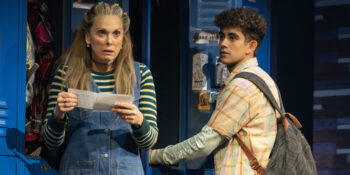
The premise to this show is both common and strange. Kimberly is a 16 year old dealing with her dysfunctional family, teenage aspirations, and high school. What is strange is that she looks like a 60 year old woman due to a rare genetic disease. While a vague and fictional illness, it’s loosely based on progeria. This show somehow has strong morals and a powerful message while having me completely onboard with comic underage felonies.
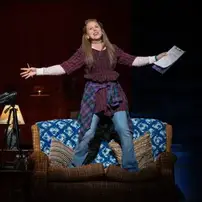
The show is set in 1999, as the playbill says, “Before kids had cell phones.” This is an excellent choice, not only sticking with the setting of the original play, but avoiding the often cringy and dated attempts at hipness that other Broadway plays have recently made (like flossing in Mrs. Doubtfire and Wendy needlessly recording a TikTok in Peter Pan). Carolee Carmello does a great job of playing a teenager despite her real life age of 62. Her motions and manner of speaking feel like those of a teenage girl without any forced girlishness. Her voice is heavy with vibrato, unlike the other singers, adding to the difference. The other cast members playing her teenage friends are excellently cast. I think they’re actually teenagers, or if not, so close you can’t tell the difference. This is especially important in this show because you need Kimberly to stand out as an elderly-looking woman hanging with teens.
The show begins at the skating rink. We’re introduced to Seth, Kimberly’s love interest, and four other teenagers who not only have conflicting crushes on each other (forget love triangle, I’m not even sure what shape this one makes), but who are focused on their show choir studies. Kimberly interacts shyly with them. Then after a simple but satisfying downpour of snow her dad Buddy picks her up over two hours late because he’d been out drinking. At home is her narcissist mother singing my favorite song from the show “Hello, Darling,” which is her recording a video to the baby she is pregnant with.

The music to the show is solid. David Lindsay-Abaire’s lyrics are so good, and the music is fun and really grew on me. When I listened to the broadway cast recording after seeing the show I appreciated the music much more, despite the album’s sloppy overuse of pitch correction. Many of the songs are hilarious and perfectly matched to the on-stage action. The choreography to the show is often quite simple: singing to a camera while sitting on a couch, standing and facing the audience while singing a ballad. But there are other times where it’s surprising: the moment when characters who have been walking around on stage in ice skates go onto the ice and are suddenly skating around the stage (this bit of magic is done with liquid glycerin). “Happy for Her” is sung by Buddy while he’s driving Kimberly and Seth to school, and each move of the steering wheel results in realistic sways and bumps from the characters, getting sillier and sillier the more wildly Buddy drives. Simple slapstick is used when the group of teens tries to wash checks with Aunt Debra.
The pacing of the show is great. Two acts with one intermission, the first act introduces all the characters and their conflicts, and instead of leaving the second act to the denouement, the primary conflicts take place here. Kimberly’s criminal aunt Debra has followed them to their new home and takes over their basement, then convinces Kimberly and the other teens to join her in using a stolen mailbox for check fraud.
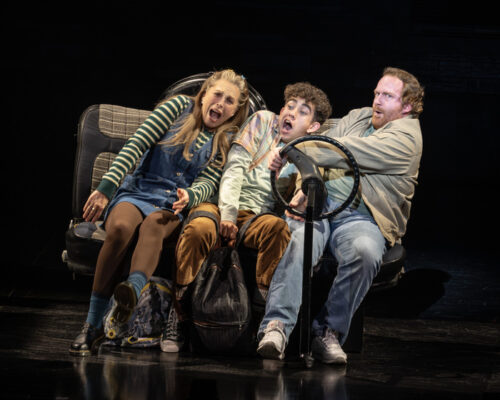
An aspect of the writing that is particularly good is the casual hurts that Kimberly experiences from everyone, their heedless remarks that remind her of her age or mortality. Except for her parents and Aunt Debra, no one is cruel or unkind; they’re just thoughtless teenagers. And Kimberly shows her hurt but doesn’t wallow in it, showcasing inner resilience and strength that not only is miraculous given her parents, but is the reaction that we’d all like to think we’d have in the same situation. Her love interest Seth also lets these casual comments slip, but we still like him. He shares an unhappy home life and a familiarity with tragedy, yet doesn’t let that control his life. His passion is for anagrams, which gives us the title of the musical: Kimberly Lovaco can be rearranged to say Cleverly Akimbo. Akimbo is to have a hand on the hip with the elbow turned out, or for another limb to be in a bent position. Merriam Webster clarifies that the term, while originally neutral, now implies defiance and confidence. Anagrams are the metaphor for the show in that you can take what you’ve been given and make something new with it. This is what Seth teaches Kimberly, and so we root for them because their relationship is more than just “he’s cute she’s cute.” Miguel Gil plays Seth with great musicality, charm, and enthusiasm.
The show isn’t just about nice teens being friends: Kimberly’s parents struggle and cause trouble for her, and her criminal aunt tries to involve the teens in an illegal enterprise. All three of these adults are delightfully and comedically horrible in their own ways, while remaining relatable in some aspects of their humanity.
The main struggle and message of the show are about mortality and living life now. In a scene where all the teenagers are sitting and talking, one of them says that right now isn’t real life, they’re just in purgatory for their future real lives. Each talks about what they’ll do in the future. Then they all look at Kimberly. She is silent: most with her condition don’t make it past sixteen, and she just celebrated that birthday. Unlike them, she’s stuck in the now because there is no future. In the touching song “Now,” they communicate how unreliable the future is, how they can hope to do things but keep in mind that tomorrow might never arrive.
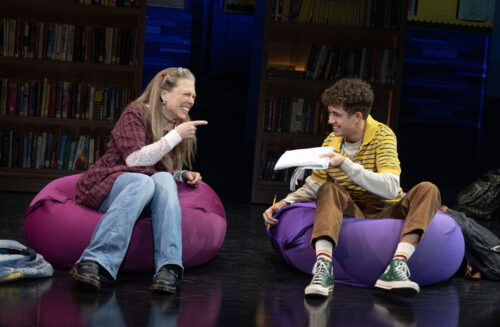
We all face death, imminent or decades from now, we just don’t know. This show reminds us to face that death and allow the knowledge to prompt us to live life in the now. Like many old adages this sounds dully moralizing, but like all good fiction, this play brings this truth to life.
The end of the show doesn’t fix all the problems faced in the story, there’s no miracle cure or sudden reform of a parent. But it is uplifting and happy and brave, and the whole story’s sincerity ends sincerely. There’s some play logic: I’m totally in support of some federal felonies, and I’m able to laugh at the actually horrible parents and aunts and their activities. But the meaning is only helped by laughter.
Kimberly Akimbo is at TPAC through April 13. For more information, see Kimberly Akimbo | Tennessee Performing Arts Center and Kimberly Akimbo.
At the Darkhorse Theater
A Tiny Beautiful Play
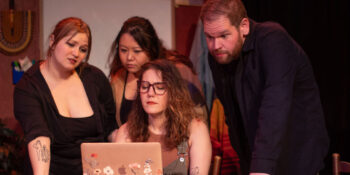
I hadn’t heard of the book Tiny Beautiful Things or its TV and stage adaptations before Women in Theatre Nashville announced this show. I had, however, heard of Cheryl Strayed’s other book Wild, which was adapted into a 2012 film starring Reese Witherspoon. While Wild is a straightforward memoir of Strayed’s backpacking journey of the Pacific Crest Trail, Tiny Beautiful Things is different, being a compilation of essays that she wrote over two years while serving as the Dear Sugar advice columnist for The Rumpus (the column is archived here). The people writing to this online literary magazine write well, and write full proper letters; imagine Dear Abby except with talented writers and no word count restrictions. Advice columns are uniquely enjoyable with their mixture of practical edification, entertainment, and schadenfreude, scratching some of the same itch as gossip or reality TV except with a claim to personal improvement.
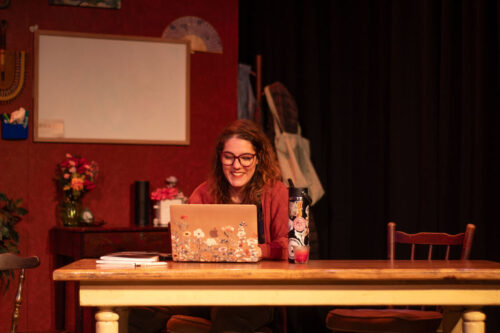
A show comprised of letters requesting and receiving advice might sound like a dreary series of moralizing monologues, but the pacing of the 90 minute show is excellent, managing changes of topics without extended slogs of tragedy or wild oscillations from heavy to light topics. It never dragged or caused me to glance at my watch. The play was adeptly adapted for the stage by Nia Vardalos, who starred as Sugar in the 2016 premier performance. You probably know her as the writer and star of My Big Fat Greek Wedding. The letters she chose for the play were either unabridged or only lightly edited from the originals, maintaining the authenticity of the questions and answers.
I attended Tiny Beautiful Things on March 28th at their regular venue, The Darkhorse Theater. There was one set: Sugar’s house. National park posters were on the walls and scattered toys were evidence of her two children. A rectangular kitchen table with chairs stood stage left. Jules Robinson’s design was well-balanced and made the space feel lived in. The props that characters later used were organically included with other objects of decor.
As the play begins Sugar enters the house, tidies up toys left in the middle of the room, and then settles at the table with her computer. After briefly trying to work, she leans back and scrolls on her phone through TikToks. Kate Johnson’s series of audiobytes for this got laughs from the audience. Sugar is interrupted by an email from a friend, asking her if she’d like to take over his unpaid anonymous online advice column. While at first typing out a refusal, she decides to accept the role of Dear Sugar. The three other members of the cast come on stage and call out for advice in quick succession until one of them takes the center of the stage and gives a monologue: the first full letter asking for advice. Sugar listens, then answers. The show has some very funny moments discussing infidelity, santa kinks, and hapless dating advice, but much of the show focuses on intimately vulnerable human struggles. In her producer’s note, Stephanie Dillard writes: “Its premise is simple: people write letters seeking guidance, and Sugar responds. Yet in performance, these seemingly ordinary exchanges swell into something extraordinary, a surge of compassion and emotional resonance that far exceeds the play’s modest scale.”
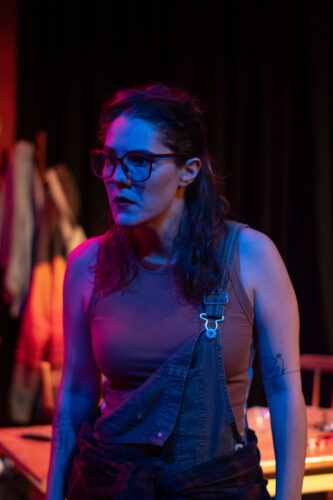
This show requires a lot of the lead actress. Sugar is a unique person whose letters show her to be empathetic instead of pitying, having experienced great pain and made it to the other side. She isn’t afraid to call people out but never casts them out. She is funny but not a comedian. Strikingly for an advice columnist, she uses many personal stories as illustrations of the point she is making in her advice. This is tricky because anyone who has sat through many sermons or lectures can tell when personal anecdotes are genuinely helpful to the point being made, and when they’re merely self-absorbed. Sugar is never self-indulgent or glib. She uses the power of stories to illuminate her advice so we see her truisms as the hard, real truths they are. Kyla Ledes did this with grace. She had many monologues throughout the play, and her delivery always fit the moment perfectly, whether she was discussing her childhood sexual abuse, dating advice, motherhood, kleptomania, or grief. Many people, when portraying grief, make it clear that they haven’t yet experienced it in their own lives: it is not sadness, depression, or loneliness. While it may include all or some of those things, grief is a primary emotion, like joy or anger. Ledes’ performance was genuine. I emphasize this because some of the letters delve deeply into difficult topics, and any sense of inauthenticity would have spoiled the show.
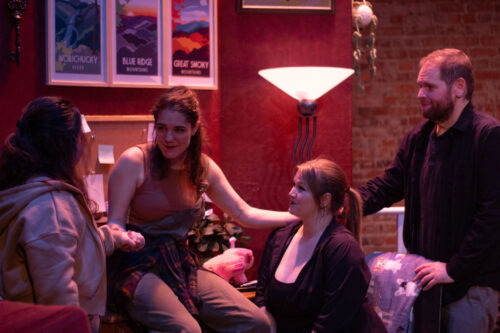
The three supporting actors were fun to watch and seemed to have a blast: how many other shows allow them to go through so many characters and ranges of emotion in quick succession? JJ Lee’s comedy background certainly showed in her acting, and Fiona Barrett and Robert Coles did best in their tragic roles.
I attended the show with my mother. Some of the topics included in the show have touched our own lives. Discussing the show naturally led to a discussion of our own lives, and a wonderful conversation we might not have otherwise had. Unlike many other plays, a discussion of it afterwards basically requires fascinating and vulnerable conversation.
WIT is a young nonprofit organization, founded in 2023. Prior to Tiny Beautiful Things they’ve done two plays (links to our interview here and review here). What impresses me most about WIT is their excellent taste: they choose shows that are more than just entertainment and are within the abilities of a new, small organization. They haven’t announced their next season yet, but judging by their track record, it’s going to be good.
While the brief run of Tiny Beautiful Things is over, you can learn more about WIT here.




